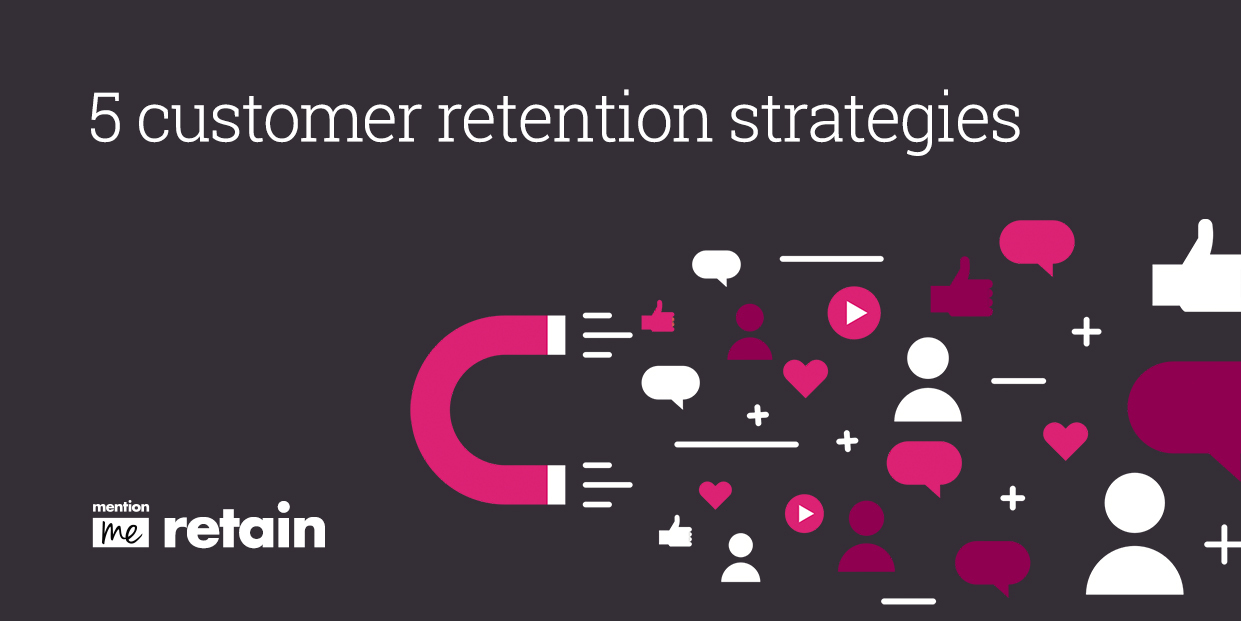The Top 10 Customer Retention Metrics for 2025

Read time: 5 mins
To crack the nut of customer retention, you need two things: An understanding of user retention metrics and an appreciation of the significance of those metrics.
While both are crucial, It’s this second part of the equation that tells the story beneath the raw data, allowing you to build trust with your customers and foster long-term relationships.
Today, we’re going to show you how to do both with ten popular customer retention metrics.
How to measure the customer retention rate
So, how do you measure your customer retention rate?
The standard way is to gather three key pieces of data:
- How many customers you had at the start of the period (S)
- How many new customers you acquire during the period (N)
- The total number of customers at the end of the period (E)
When you have these figures, put them into the following formula:
- (E-N)/S x 100 = customer retention rate
If you want to know how to put this into practice, you can see a worked example in our comprehensive guide to customer retention measurement.
Top 10 customer retention metrics
Retention is not a one-size-fits-all deal. There are plenty of other metrics to help you measure how well you’re keeping customers engaged and buying from your brand.
Finding these metrics is easier said than done: sometimes it’s unclear why, or even if, a customer has churned.
So use the user retention metrics below, broken into categories, and to really understand what’s driving buying decisions, incorporate advocacy data to build a more complete picture of retention.
Customer retention metrics that measure purchases
A good customer retention metric is one that provides clarity, gives you a benchmark to work from, and points the way forward. That said, most attempts to calculate retention start with looking at purchases over a given period. These are the most popular purchase-focussed customer retention metrics:
1. Average customer lifetime (ACL)
Refers to the average length of time a customer remains engaged or active before they churn. You can work out ACL by adding the length of time each of your customers stays with your brand and dividing that number by your total number of customers.
2. Customer lifetime value (CLTV)
This customer retention metric, closely related to ACL, is the total value of your customers over their whole relationship with your brand. It can be calculated at the level of individual customers, as an average of your entire customer base, or as an average of particular customer segments.
That's why understanding how to increase CLTV is vital to help you drive long-term value and profitability.
%20branded%20graphic.png?width=548&height=302&name=Customer%20Lifetime%20Value%20(CLTV)%20branded%20graphic.png)
CLTV is an effective way to measure the value of different customers and how likely they are to stick around
3. Purchase frequency
This allows you to understand how often customers are coming back. Set a time period and divide the number of total sales by the number of customers who purchased during the period.
4. Average order value (AOV)
By tracking AOV over time, you can see if you’re successfully encouraging customers to purchase more in each transaction. You calculate AOV in a similar way to purchase frequency: choose a period of time to measure sales over but, this time, divide total revenue by number of sales.
Customer retention metrics that measure sentiment
There are two key ways to measure how your customers feel about your brand. First, measuring the percentage of customers who leave your brand during a period of time, and secondly, asking customers how likely they are to recommend your brand. You're probably familiar with these two customer retention metrics:
5. Churn rate
Churn rate is the percentage of customers who discontinue their relationship with you during a certain period of time — whether in the form of cancelled subscriptions or a failure to make a purchase.
Subscription-based businesses typically calculated churn rate by dividing the number of customers lost during that period by the total number of customers at the beginning of the period.
Businesses that rely on repeat purchases (retail, for example), measure customer churn as the percentage of customers who do not make repeat purchases within a certain period.
If you’re one of them, calculate churn rate by dividing the number of customers who have not made a purchase within a defined timeframe (e.g., six months or a year) by the total number of customers at the beginning of the period.
Brands will often measure churn by looking at the inverse of this measurement, the repeat purchase ratio.
6. Net Promoter Score (NPS)
NPS is a health check on how satisfied your customers are, developed by Fred Reichheld. Send a survey asking “On a scale of 1-10, how likely are you to recommend us to a friend?”
- Customers who respond with 9 or 10 are promoters (9 or 10 score): highly satisfied customers who are likely to recommend the product or service
- Those who say 7 or 8 are passives
- People who score 6 or less are detractors
You can work out your overall NPS score by subtracting the percentage of detractors from the percentage of promoters.

NPS surveys measure how customers feel about your brand
Customer retention metrics that measure advocacy
If all you’re doing is tracking sales and customer churn, you’re only getting a surface-level view. Going beyond this and leveraging user retention metrics that measure advocacy data allows you to uncover the motivations, preferences, and behaviours of your most loyal customers.
7. Referral rate
How many friends your customers refer and how often they do it is a great proxy for measuring customer retention. If your customers are sending others your way that's a pretty good sign they’re happy with you and want to stick around.
This is an important customer retention metric. Sure, NPS is a useful survey for understanding how likely customers are to recommend your brand, but it only scratches the surface — you can only track real revenue via referrals.
8. Referral conversion rate
By tracking the number of referred friends who actually become new customers, you gain insight into the effectiveness of your referral strategy. High conversion rates indicate that your advocates are referring the right type of people and your offer is attractive to them.
9. Advocate engagement
Are your customers actively sharing referral codes with their contacts, or are those referral codes gathering dust? The level of advocate engagement is a crucial component of advocacy data as active advocates are typically your most satisfied and retained customers.
10. Advocacy frequency
How often are your customers advocating for your brand? Regular advocacy indicates an engaged and satisfied customer base, which can contribute to improved retention.
Frequently asked questions
What is a good customer retention rate?
Retention rates vary by industry and are influenced by the wider economy. For ecommerce brands, a customer retention rate (CRR) of around 30% is the norm. If you’re doing better than this you should be pleased with your efforts.
How to improve customer retention rate?
Anything you do to make dealing with your brand a more satisfying experience will improve your customer retention rate. There are many customer retention strategies, including providing excellent customer service, a loyalty programme that offers real value to your customers, and personalised email campaigns are just some of the ways.
What are the major benefits of customer retention?
When you can rely on your customers’ repeat spending, the benefits are huge: you have to spend less money on marketing, the lifetime value of each customer increases, and you can grow in a sustainable and profitable way.
Leveraging customer retention metrics with Mention Me
Mention Me is the world's best referral platform that puts customer love and retention at the heart of your marketing strategies. We offer tools and expert support designed to identify, activate and nurture your brand's most valuable customers.
Ready to turn your satisfied customers into life-long, passionate brand fans via referral marketing? Let’s start a conversation.
Contact our friendly experts to get a free demo today.

Rhys Williams
Read more >
Never miss another update
Subscribe to our blog and get monthly emails packed full of the latest marketing trends and tips







